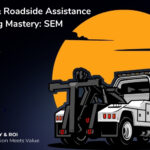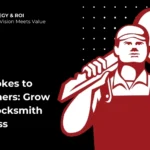The WordPress ecosystem is a rich and dynamic environment, a universe teeming with themes, plugins, and the constant evolution of its core functionality. Mastering this environment requires both skill and insight, and can seem daunting to the uninitiated. However, with a solid understanding of the fundamentals, you can confidently navigate the WordPress ecosystem and harness its potential to create engaging, efficient, and effective websites.
The cornerstone of WordPress lies in its power to balance simplicity with versatility. It accommodates beginners just starting out with website development and experts who want the flexibility to customize and optimize their website’s functionality to their specific needs.
When we talk about effective design in the WordPress ecosystem, the discussion inevitably gravitates towards themes. Themes determine the aesthetic layout and visual style of your website, but they also influence the user interface and user experience. To select an effective theme, consider the following factors: ease of customization, compatibility with desired plugins, responsiveness to different screen sizes, and the speed at which it loads. Remember that the simpler and cleaner the theme, the better it is for your website’s performance and for search engine optimization (SEO).
Plugins, on the other hand, form the backbone of the functional capabilities of WordPress sites. They can transform your website from a simple blog into an ecommerce store, a portfolio gallery, a membership site, and much more. When choosing plugins, focus on those that enhance your site’s functionality without compromising its performance. Keep in mind that less is often more when it comes to plugins. It’s better to have a few well-chosen plugins that perform their tasks efficiently, rather than a multitude of plugins that slow down your website and potentially create conflicts or security risks.
Development in the WordPress ecosystem goes beyond merely selecting themes and plugins. It also involves a deep understanding of the WordPress core, as well as the PHP language it’s built on. This knowledge will allow you to customize your website’s functionality, optimize its performance, and ensure it’s secure from cyber threats. Furthermore, being familiar with CSS and JavaScript can empower you to alter the visual design and interactivity of your site.
However, all this technical knowledge must be guided by a clear understanding of your audience’s needs. Usability should always be a top priority in your design and development processes. After all, a website that isn’t user-friendly, no matter how sophisticated or aesthetically pleasing, will struggle to engage and retain visitors.
In summary, navigating the WordPress ecosystem effectively requires a balance of technical acumen and user-centered design. It’s about understanding the tools at your disposal – themes, plugins, and coding languages – and how to wield them to create a site that is both visually appealing and functionally robust. It’s a journey of continuous learning and adaptation, but one that can yield rich rewards in the form of a successful, high-performing website.





